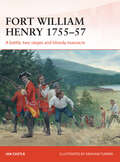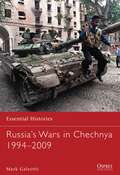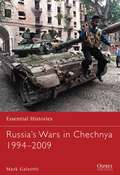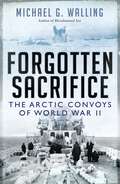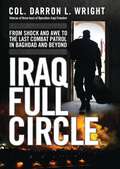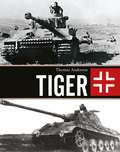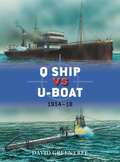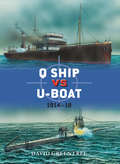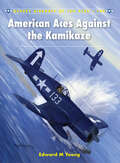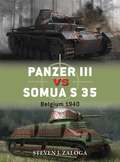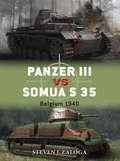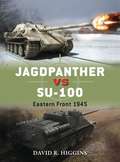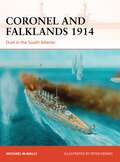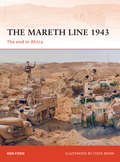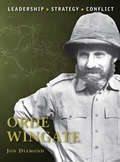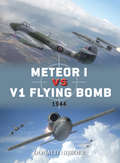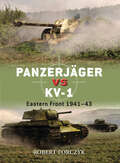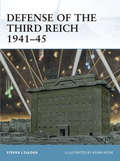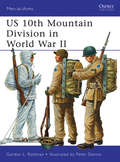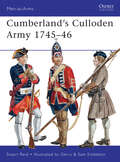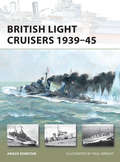- Table View
- List View
Fort William Henry 1755–57: A battle, two sieges and bloody massacre (Campaign #260)
by Graham Turner Ian CastleAfter the British garrison of Fort William Henry in the colony of New York surrendered to the besieging army of the French commander Marquis de Montcalm in August 1757, it appeared that this particular episode of the French and Indian War was over. What happened next became the most infamous incident of the war – and one which forms an integral part of James Fenimore Cooper's classic novel The Last of the Mohicans – the 'massacre' of Fort William Henry. As the garrison prepared to march for Fort Edward a flood of enraged Native Americans swept over the column, unleashing an unstoppable tide of slaughter. Cooper's version has coloured our view of the incident, so what really happened? Ian Castle details new research on the campaign, including some fascinating archaeological work that has taken place over the last 20 years, updating the view put forward by The Last of the Mohicans.
Fort William Henry 1755–57: A battle, two sieges and bloody massacre (Campaign #260)
by Ian CastleAfter the British garrison of Fort William Henry in the colony of New York surrendered to the besieging army of the French commander Marquis de Montcalm in August 1757, it appeared that this particular episode of the French and Indian War was over. What happened next became the most infamous incident of the war – and one which forms an integral part of James Fenimore Cooper's classic novel The Last of the Mohicans – the 'massacre' of Fort William Henry. As the garrison prepared to march for Fort Edward a flood of enraged Native Americans swept over the column, unleashing an unstoppable tide of slaughter. Cooper's version has coloured our view of the incident, so what really happened? Ian Castle details new research on the campaign, including some fascinating archaeological work that has taken place over the last 20 years, updating the view put forward by The Last of the Mohicans.
Russia’s Wars in Chechnya 1994–2009 (Essential Histories)
by Mark GaleottiIn this fully illustrated book an expert on the conflicts traces the progress of the wars in Chechnya, from the initial Russian advance through to urban battles such as Grozny, and the prolonged guerrilla warfare in the mountainous regions. He assesses how the wars have torn apart the fabric of Chechen society and their impact on Russia itself. Featuring specially drawn full-colour mapping and drawing upon a wide range of sources, this succinct account explains the origins, history and consequences of Russia's wars in Chechnya, shedding new light on the history – and prospects – of the troubled region.
Russia’s Wars in Chechnya 1994–2009 (Essential Histories #78)
by Mark GaleottiIn this fully illustrated book an expert on the conflicts traces the progress of the wars in Chechnya, from the initial Russian advance through to urban battles such as Grozny, and the prolonged guerrilla warfare in the mountainous regions. He assesses how the wars have torn apart the fabric of Chechen society and their impact on Russia itself. Featuring specially drawn full-colour mapping and drawing upon a wide range of sources, this succinct account explains the origins, history and consequences of Russia's wars in Chechnya, shedding new light on the history – and prospects – of the troubled region.
Forgotten Sacrifice: The Arctic Convoys of World War II
by Michael G. WallingThe story begins in October 1939, when Germany and the Soviet Union began diplomatic maneuvering. The action accelerates with Winston Churchill's decision in 1941 to provide supplies to Soviet forces battling the German invasion and for five long years, thousands of men and women fought ferociously in the coldest corner of hell on earth. Some fought for survival, some struggled to help others survive, and some sought to crush their enemies. The Arctic Convoys were war without mercy. If man-made death didn't get you, the Arctic's weapons of ice and cold would. These natural weapons killed regardless of whose side you were on or how just your cause. No one escaped unscathed. Author Mike Walling captures the convoy's bitter essence and reveals a timeless tale of determination, heroism, sacrifice, and the strength of the human spirit.
Iraq Full Circle: From Shock and Awe to the Last Combat Patrol in Baghdad and Beyond
by Darron L. WrightFrom 2003 through 2010, more than 200,000 men and women were deployed in Iraq. For seven years, they fought ferociously in the blistering sands in the Land Between the Two Rivers. Some fought for pride or survival, some to bring democracy to a forsaken land that has known only tyranny and strife. Scores of books have been published about the war, most criticizing the strategies and execution. Some have been personal memoirs capturing the heroism and sacrifice. Here U.S. Army LTC Darron Wright, a proven combat leader, joins forces with author Mike Walling to lift the veil on the Iraq War, revealing the build-up of troops; the equipping, training, and planning; the capture of Saddam Hussein; the formation of the new Government; and the last patrol. Through vivid stories and military documents, this provides readers with a first-hand of the full conflict.
Tiger
by Thomas AndersonOne of the most feared weapons of World War II, the Tiger tank was a beast of a machine which dominated the battlefields of Europe with its astonishing size, speed and firepower, which continues to fascinate more than 70 years after it was first designed. Revealing its design and development history, Thomas Anderson draws upon original German archival material to tell the story of the birth of the Tiger. He then analyzes its success on the battlefield and the many modifications and variants that also came into play. Illustrated throughout with rare photographs and drawings, this is a unique history of what is easily the most famous tank ever produced.
Q Ship vs U-Boat: 1914–18 (Duel)
by Peter Dennis Ian Palmer David GreentreeQ ships came in all shapes and sizes – coastal steamer, trawler, barque, yacht or schooner – but all had to look harmless in order to lure their opponents to the surface and encourage them to attack. Armaments differed according to ship size; steamers commonly had 4in guns mounted amidships and in the bow, trawlers 3-pdrs and sailing ships 12-pdrs. Those who served on Q ships had to accept that their U-boat opponents would be able to strike first. Q ship captains kept ready a 'panic crew', which was trained to act out an elaborate evacuation to convince the U-boat commander that the ship was being abandoned by its crew. The Q ship captain would remain behind with a handful of other crewmen manning the guns, which remained hidden until the most opportune time to unmask and engage the U-boat. The Q ship concept had emerged early in the war when no other method seemed likely to counter the U-boat threat, and flourished until new technologies and tactics were developed, tested and implemented.
Q Ship vs U-Boat: 1914–18 (Duel #57)
by Peter Dennis Ian Palmer David GreentreeQ ships came in all shapes and sizes – coastal steamer, trawler, barque, yacht or schooner – but all had to look harmless in order to lure their opponents to the surface and encourage them to attack. Armaments differed according to ship size; steamers commonly had 4in guns mounted amidships and in the bow, trawlers 3-pdrs and sailing ships 12-pdrs. Those who served on Q ships had to accept that their U-boat opponents would be able to strike first. Q ship captains kept ready a 'panic crew', which was trained to act out an elaborate evacuation to convince the U-boat commander that the ship was being abandoned by its crew. The Q ship captain would remain behind with a handful of other crewmen manning the guns, which remained hidden until the most opportune time to unmask and engage the U-boat. The Q ship concept had emerged early in the war when no other method seemed likely to counter the U-boat threat, and flourished until new technologies and tactics were developed, tested and implemented.
American Aces against the Kamikaze (Aircraft of the Aces #109)
by Edward M. YoungThe Japanese High Command realised that the loss of Okinawa would give the Americans a base for the invasion of Japan. Its desperate response was to unleash the full force of the Special Attack Units, known in the west as the Kamikaze ('Divine Wind'). In a series of mass attacks in between April and June 1945, more than 900 Kamikaze aeroplanes were shot down. Conventional fighters and bombers accompanied the Special Attack Units as escorts, and to add their own weight to the attacks on the US fleet. In the air battles leading up to the invasion of Okinawa, as well as those that raged over the island in the three months that followed, the Japanese lost more than 7,000 aircraft both in the air and on the ground. In the course of the fighting, 67 Navy, 21 Marine, and three USAAF pilots became aces. In many ways it was an uneven combat and on numerous occasions following these uneven contests, American fighter pilots would return from combat having shot down up to six Japanese aeroplanes during a single mission.
Forgotten Sacrifice: The Arctic Convoys of World War II
by Michael G. WallingThe story begins in October 1939, when Germany and the Soviet Union began diplomatic maneuvering. The action accelerates with Winston Churchill's decision in 1941 to provide supplies to Soviet forces battling the German invasion and for five long years, thousands of men and women fought ferociously in the coldest corner of hell on earth. Some fought for survival, some struggled to help others survive, and some sought to crush their enemies. The Arctic Convoys were war without mercy. If man-made death didn't get you, the Arctic's weapons of ice and cold would. These natural weapons killed regardless of whose side you were on or how just your cause. No one escaped unscathed. Author Mike Walling captures the convoy's bitter essence and reveals a timeless tale of determination, heroism, sacrifice, and the strength of the human spirit.
Iraq Full Circle: From Shock and Awe to the Last Combat Patrol in Baghdad and Beyond
by Darron L. WrightFrom 2003 through 2010, more than 200,000 men and women were deployed in Iraq. For seven years, they fought ferociously in the blistering sands in the Land Between the Two Rivers. Some fought for pride or survival, some to bring democracy to a forsaken land that has known only tyranny and strife. Scores of books have been published about the war, most criticizing the strategies and execution. Some have been personal memoirs capturing the heroism and sacrifice. Here U.S. Army LTC Darron Wright, a proven combat leader, joins forces with author Mike Walling to lift the veil on the Iraq War, revealing the build-up of troops; the equipping, training, and planning; the capture of Saddam Hussein; the formation of the new Government; and the last patrol. Through vivid stories and military documents, this provides readers with a first-hand of the full conflict.
Tiger (General Military Ser.)
by Thomas AndersonOne of the most feared weapons of World War II, the Tiger tank was a beast of a machine which dominated the battlefields of Europe with its astonishing size, speed and firepower, which continues to fascinate more than 70 years after it was first designed. Revealing its design and development history, Thomas Anderson draws upon original German archival material to tell the story of the birth of the Tiger. He then analyzes its success on the battlefield and the many modifications and variants that also came into play. Illustrated throughout with rare photographs and drawings, this is a unique history of what is easily the most famous tank ever produced.
Panzer III vs Somua S 35: Belgium 1940 (Duel)
by Steven J. Zaloga Richard ChasemoreThe armour clashes in May 1940 were the biggest the world had yet seen, as the sweeping German advances of that period came to epitomize Blitzkrieg. The Wehrmacht's Panzer III was well matched by the French Somua S35 tanks, the two representing very different design philosophies and yet both ranking among the best in the world at the time. Fully illustrated with specially commissioned colour artwork, this work draws upon the latest research to provide a definitive analysis of the clash between these two high-quality, cutting-edge tank designs. It describes one of the key duels at the heart of a new type of warfare, in the epic battles at the outset of Hitler's conquest of France and the Low Countries.
Panzer III vs Somua S 35: Belgium 1940 (Duel #63)
by Steven J. Zaloga Richard ChasemoreThe armour clashes in May 1940 were the biggest the world had yet seen, as the sweeping German advances of that period came to epitomize Blitzkrieg. The Wehrmacht's Panzer III was well matched by the French Somua S35 tanks, the two representing very different design philosophies and yet both ranking among the best in the world at the time. Fully illustrated with specially commissioned colour artwork, this work draws upon the latest research to provide a definitive analysis of the clash between these two high-quality, cutting-edge tank designs. It describes one of the key duels at the heart of a new type of warfare, in the epic battles at the outset of Hitler's conquest of France and the Low Countries.
Jagdpanther vs SU-100: Eastern Front 1945 (Duel)
by Richard Chasemore David R. HigginsAs World War II in Europe reached its end, armour development and doctrine had experienced several years of massively accelerated change, especially within the crucible of the Eastern Front. The German Jagdpanther and Soviet SU-100, both turretless tank-destroyer designs based on a 'traditional' turret-tank chassis, were the culminating examples of how the progression of experience, resources and time constraints produced vehicles that were well suited for roles of defence and offence, respectively. The Jagdpanther represented a well-balanced solution and an excellent use of limited resources, while the SU-100 was a natural progression of the SU-85, where numbers produced compensated for rudimentary construction, poor crew comfort and limited optics.
Coronel and Falklands 1914: Duel in the South Atlantic (Campaign #248)
by Peter Dennis Michael McNallyUpon the outbreak of war, the British Royal Navy was deployed globally, whilst the Imperial German Navy was concentrated in two areas – Home Waters and Tsingtao, the home port of the crack East Asia Cruiser Squadron which, under the command of Admiral von Spee contained some of Germany's most modern cruisers. As Spee made his way to the Chilean port of Valparaiso, he met the British 4th Cruiser Squadron which had been ordered to engage and defeat the German force. This resulted in the battle of Coronel where the antiquated British warships proved no match for Spee's modern cruisers. It was the first naval defeat suffered by the Royal Navy in over 100 years. When news reached London, panic reigned and two ships HMS Inflexible and Invincible were sent to lead the force against Spee. When bad weather delayed the German arrival, Spee knew that he had to stand and fight, unaware that amongst the ships opposing him were two modern battlecruisers which outclassed any of his own squadron's ships. Given the presence of Inflexible and Invincible, the result of the battle had an inevitable outcome and after several hours hard combat, Spee's ships were defeated.
The Mareth Line 1943: The end in Africa (Campaign #250)
by Steve Noon Ken FordThe battle of El Alamein saw the shattering of Germany's hopes for victory in North Africa and from this point on the end was inevitable. In the six months that passed before the final surrender there was much hard fighting, as the defeated German and Italian armies sought to hold off the encroaching Eighth Army. Rommel, his health suffering, fought a number of major actions during this campaign before his forces settled into the pre-war French defensive position the Mareth Line. All the way he was pursued by an increasingly confident Eighth Army under the command of General Montgomery, although he was unable to outflank the retreating German and Italian forces decisively, and Rommel was even able to divert forces to inflict a sharp defeat on the newly arrived US forces at Kasserine Pass in February 1943. This was one of Rommel's last acts in the Desert War as his health problems forced his return to Germany shortly afterwards. The stage was now set for the last great battle of the Desert War as the veteran formations of the British Eighth Army took on their foes in the Afrikakorps for one last time in the major set-piece battle for the Mareth Line.
Orde Wingate (Command #20)
by Peter Dennis Jon DiamondOrde Wingate rose to fame by creating the Chindits in Burma in 1943. He is an extremely important figure in military history, and deserves just as much attention as Alanbrooke, Montgomery, and Auchinleck. Unlike them, however, he always operated outside the accepted etiquette and the formal chain of command. He was a maverick and misfit, and he held to the belief that the type of mass warfare demonstrated on the Western Front (1914–18) had very little to do with the warfare of the future. He believed that the latter would require an 'indirect approach', in which heavily lumbering armies would be exquisitely vulnerable to small groups of highly motivated, mobile and well-armed guerrillas. This book covers Wingate's experiences in pre-war Palestine, in Ethiopia in 1941 (where he formed an irregular guerrilla unit to harrass the Italian garrisons) and in World War II Burma, where the two Chindit campaigns would be his apotheosis.
Meteor I vs V1 Flying Bomb: 1944 (Duel)
by Jim Laurier Gareth Hector Donald NijboerA total of 10,500 missiles were launched as part of the V1 attack, of which 3,957 were destroyed by the defences. Indeed, it could have been much worse, for by the end of the war the Germans had manufactured close to 32,000 flying bombs. The defences put forward to guard against the V1 were formidable – 23,000 men and women with their guns, radar and communications networks were installed on coastal sites. Squadrons of Britain's newest Spitfires, the F XIVs, and Hawker Tempest Vs were kept at home to battle the new menace. Rushed into action in July 1944 to help counter the V1 threat, Britain's Gloster Meteor I was the first jet fighter to enter RAF service. On 4 August the Meteor scored its first V1 victory. Having just closed in on a flying bomb, its officer squeezed the trigger but his guns jammed. Using the Meteor's superior speed, he was able to overtake the missile and, using his wing tip, he tipped the craft over and sent it crashing into the ground. The interceptions between the V1 and Britain's Gloster Meteor were historic, and ushered in a new era of aerial combat.
Panzerjäger vs KV-1: Eastern Front 1941–43 (Duel #46)
by Robert ForczykOn the Soviet side, based upon lessons from the Spanish Civil War, the Red Army decided to develop a heavy “breakthrough” tank to smash enemy infantry defenses. This resulted in the KV-1 and KV-2 tanks, introduced in 1939. At the start of Operation Barbarossa, both these tanks were virtually invulnerable to the weapons of the Panzerjäger and demonstrated their ability to overrun German infantry on several occasions. This advantage gave the Red Army a window of opportunity between the fall of 1941 and the spring of 1942 to use their heavy tanks to repel the German invasion in a series of desperate counteroffensives. Yet the window of Soviet advantage was a narrow one and the duel between the Soviet KV heavy tanks and German Panzerjäger had a major impact upon the struggle for the strategic initiative in 1941-42.
Defense of the Third Reich 1941–45 (Fortress #107)
by Steven J. Zaloga Adam HookStarting in 1940, Germany was subjected to a growing threat of Allied bomber attack. The RAF night bombing offensive built up in a slow but unrelenting crescendo through the Ruhr campaign in the summer of 1944 and culminating in the attacks on Berlin in the autumn and early winter of 1943-44. They were joined by US daylight raids which first began to have a serious impact on German industry in the autumn of 1943. This book focuses on the land-based infrastructure of Germany's defense against the air onslaught. Besides active defense against air attack, Germany also invested heavily in passive defense such as air raid shelters. While much of this defense was conventional such as underground shelters and the dual use of subways and other structures, Germany faced some unique dilemmas in protecting cities against night fire bomb raids. As a result, German architects designed massive above-ground defense shelters which were amongst the most massive defensive structures built in World War II.
US 10th Mountain Division in World War II (Men-at-Arms #482)
by Peter Dennis Gordon L. RottmanThe 10th was the only US mountain division to be raised in World War II, and still has a high profile, being involved in operations from Iraq to Somalia and from Haiti to Afghanistan. It did not arrive in Europe until winter 1944/45, but then fought hard in the harsh mountainous terrain of Northern Italy. The division was special in a number of ways. Its personnel were selected for physical fitness and experience in winter sports, mountaineering, and hunting, unlike the rest of the infantry. It was highly trained in mountain and winter warfare, including the use of skis and snowshoes, while its organization, field clothing, and some personal equipment also differed from that of the usual infantry division. The division made extensive use of pack-mules, and its reconnaissance unit was horse-mounted, conducting the last horse-mounted charge in US history in April 1945. Featuring full-color artwork and rare photographs, this is the gripping story of the US Army's only mountain division in action during the closing months of World War II.
Cumberland’s Culloden Army 1745–46 (Men-at-Arms #483)
by Stuart ReidIn August 1745 Charles Edward Stuart, the 'Young Pretender', landed in Scotland and sparked the Second Jacobite Rising. The Jacobite forces seized Perth, then Edinburgh, where they proclaimed the Young Pretender's father King James VIII; they trounced their Hanoverian opponents at Prestonpans and crossed into England, getting as far south as Derby before withdrawing into Scotland. Far from universally popular north of the border, the Jacobite army bested another Hanoverian army at Falkirk and besieged Stirling, only to be routed by the Duke of Cumberland's army at Culloden in April 1746, a crushing defeat that ended any prospect of a Stuart restoration. Featuring full-colour artwork depicting the distinctive uniforms of Cumberland's men, this exhaustively researched study offers a wealth of detail of regimental strengths and casualties and includes an extended chronology that places individual units in specific places throughout the campaign that culminated at Culloden.
British Light Cruisers 1939–45 (New Vanguard #194)
by Paul Wright Angus KonstamThe light cruiser was a natural development of the sailing frigate – a fast multi-purpose warship that could patrol the sea lanes, protect convoys and scout for enemy battle fleets. By the inter-war period the need for this type of ship was even more important, given the increasing need for protection from aircraft, and the need to screen the fleet from submarines or destroyers. Wartime experience had shown that the British light cruiser was one of the most versatile types of ship in the Royal Navy, able to protect other warships, bombard enemy shores, guard life-saving convoys and intercept and destroy enemy warships. These were truly the workhorses of the wartime Royal Navy. While the battleships and carriers grabbed the headlines, these sleek, elegant warships quietly got on with the job of securing control of the seas.

